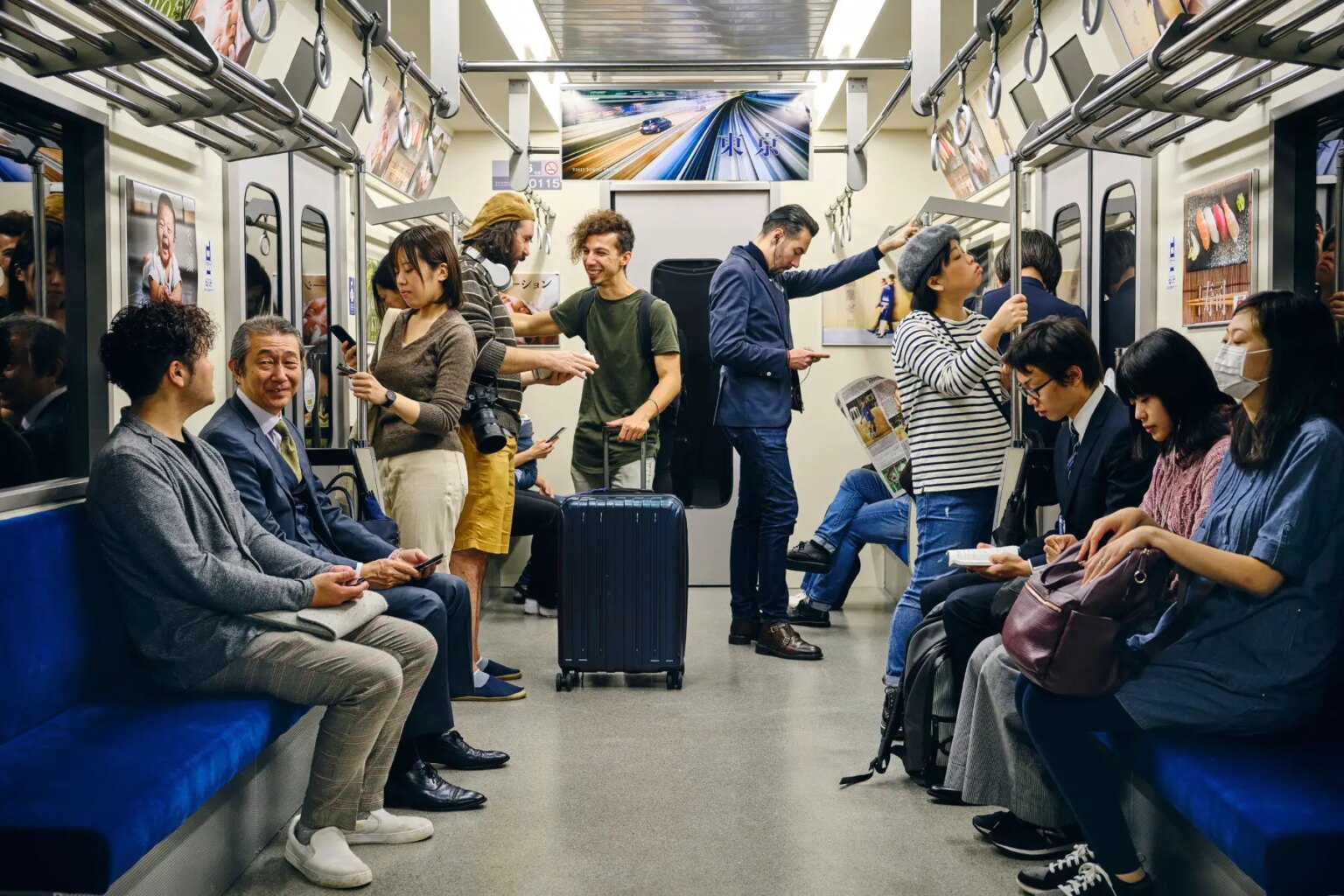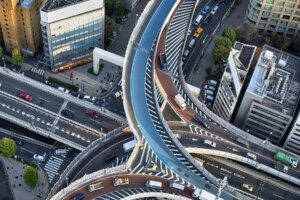From its futuristic cities and stunning architecture to its nuanced culture and world-famous cuisine, Japan (日本, Nihon/Nippon) is unique in more ways than one.
However, it is perhaps the country’s infrastructure that really sets it apart. Indeed, newly-arrived expats will soon discover that everything, including the public transportation networks, is impeccably well-thought-out.
That said, this can be somewhat confusing and intimidating to those who are unfamiliar with it. So, to help you navigate public transport with ease, this article includes the following information:
- Public transportation in Japan
- Public transportation apps and websites
- Trains in Japan
- Buses in Japan
- Taxis, Uber, and other car services in Japan
- Long-distance coaches in Japan
- Airports in Japan
- Other methods of public transportation in Japan
- Public transport discounts and financial aid in Japan
- How disability-accessible is public transportation in Japan?
- How environmentally friendly is public transportation in Japan?
- Public transportation safety tips in Japan
- Making a public transportation complaint in Japan
- Useful resources
Public transportation in Japan
Japan boasts one of the world’s most efficient and convenient public transportation systems. In fact, Tokyo’s network alone ranked as the third best in the world in a 2023 survey of more than 50 cities across the globe.

Needless to say, you won’t struggle to find ways to get around the country and explore its many impressive cities and sights.
Japan’s public transportation system is praised for being clean, safe, and efficient, carrying more than 30 billion passengers (PDF) each year to their destinations. Residents and tourists alike can use a variety of modes of transport, including trains, subways, monorails, buses, ferries, ride-shares, and more.
The Ministry of Land, Infrastructure, Transport, and Tourism (MILT) (国土交通省, Kokudo Kotsu Sho) oversees public transport (公共交通機関, kokyo kotsu kikan) in Japan, although the system consists of numerous private components.
Public transportation apps and websites
Numerous apps and websites are designed to help you navigate public transportation in Japan, some of which are more well-known in the local community. As such, you may find it useful to have the following apps downloaded onto your phone to help you get around:
- Google Maps: Provides real-time GPS navigation, traffic, and transit information, as well as the latest information on businesses, including grocery stores, pharmacies, and other important places
- HyperDia: Provides train information, prices, and average journey times to help you plan your trips, as well as useful links to hotels, car rental services, and restaurants for the selected location
- Japan Travel: Helps you navigate from A to B using all modes of transport, and provides basic guides and informative articles about traveling in Japan
- MAPS.ME: Allows you to navigate maps and share your location with friends without the need for an internet connection
- Norikae Annai: The most downloaded in Japan, which allows you to check the route, the fare, and the required time for traveling by railway or airplane
Notably, while most of these apps provide navigation routes and timetables, you will usually need to buy your ticket at the relevant station. That said, if you use an app or a website that is provided by a particular public transport company, you can sometimes purchase tickets for specific trains or buses online.
Trains in Japan
Trains (電車, densha) are the backbone of public transportation in Japan. However, the system can be tough to navigate as it consists of numerous national, regional, and public and private operators.
The Japan Railways Group, which is more commonly known as the JR Group (JRグループ, JR Gurupu) or simply JR, is the main public transport operator for national trains in the country. It comprises seven companies across Japan, including JR East, JR Central, JR West, JR Hokkaido, and JR Kyushu.
The Group is also responsible for the famous Shinkansen bullet trains (新幹線, shinkan sen), where passengers get to travel at 300 kilometers per hour while enjoying an ekiben (駅弁); a lunchbox typically filled with rice, grilled fish, and other kinds of delicious and colorful Japanese bites.

Numerous private train companies are also operating in different parts of the country. Some of the major ones include:
- Hankyu (阪急電鉄, Hankyu Dentetsu)
- Keisei (京成電鉄, Keisei Dentetsu)
- Kintetsu (近鉄/近畿日本鉄道, Kinki Nihon Tetsudo)
- Meitetsu (名鉄/名古屋鉄道, Nagoya Tetsudo)
- Nishitetsu (西鉄/西日本鉄道, Nishi-Nihon Tetsudo)
- Odakyu (小田急電鉄, Odakyu Dentetsu)
- Seibu (西武鉄道, Seibu Tetsudo)
- Tobu (東武鉄道, Tobu Tetsudo)
- Tokyu (東急電鉄, Tokyu Dentetsu)
Japan’s train network is famously reliable, ensuring you arrive at your destination on time. Of course, in the event of unavoidable delays or other mishaps, the train companies are usually very good at ensuring affected customers get where they need to be.
Moreover, trains in Japan are usually very clean, quiet, and comfortable, making the journey more enjoyable. And with long-distance routes offering several classes, you also get to travel in style.
Of course, respecting local etiquette is important wherever you go, and it is worth noting that Japanese people are very considerate when using public transport. As such, you should make sure not to leave any trash onboard and be quiet, which means no loud talking or music blasting through your headphones!
Train tickets and costs in Japan
The cost of a train ticket (切符, kippu) in Japan can vary greatly because there are so many options to choose from; for example, the length of the journey, the type of train, and the class you travel. Prices can also differ between train companies, which is something to bear in mind if you are looking for the cheapest option.
However, these are the general fare structures when traveling by train in Japan:
- Base fare (初乗り運賃, hatsunori unchin): Basic one-way fare calculated by distance; usually ¥20/km for short distances and ¥10/km for longer distances
- Limited express fee (特急料金, tokkyu ryokin): This is a supplemental fee that you need to pay when using the shinkansen or tokkyu trains; in addition to the base fares, which range from ¥800 to ¥11,000 (shinkansen) or ¥500 to ¥4,000 (tokkyu), depending on the distance
- Green car fee (グリーン料金, gurin ryokin): Another supplemental price for using a “green car” (essentially, the first class cabins), which usually ranges from ¥500 to ¥5,000, depending on the distance
- Seat reservation cost (指定席料金, shiteiseki ryokin): An extra fee you need to pay if you want to reserve a seat; it is usually ¥530, but can be higher or lower depending on whether it is high or low season
- Berth fee on a night train (寝台料金, shindai ryokin): Extra cost for a private compartment or berth on overnight train services; prices range from ¥6,600 to ¥14,000 depending on the category
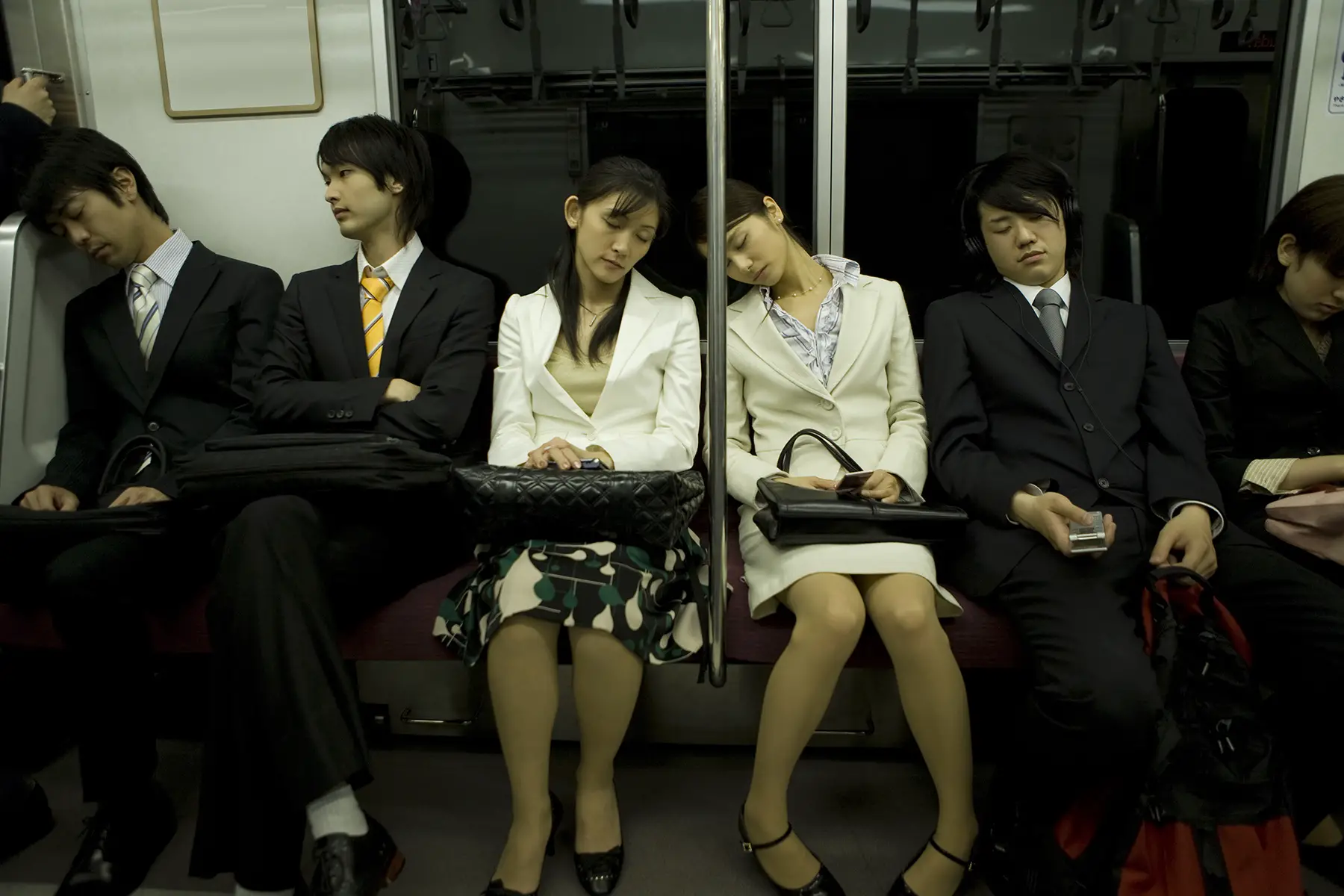
There are also several concessions and discounts available for train tickets in Japan, including:
- Children (6 to 11 years): 50% for the base fare, limited express, and seat reservations
- Young children (1 to 5 years): Free travel for up to two children per adult; additional children pay the regular child fee
- Infant (under one year): Free travel, unless sitting in the reserved cars
- Round trips: 10% off the base fare if the trip is over 600kms one way
- Students: 20% discounts on trips over 100 kilometers; note, you need to register with JR ahead of travel
- Groups: 10% to 15% discounts for eight or more adults traveling together; 30% to 50% for eight or more students; additional discounts for groups of more than 30 travelers; note: you need to book tickets at least two weeks ahead
IC cards
Many locals use prepaid IC cards (ICカード, IC kado) for daily travel in Japan. This is similar to London’s Oyster card and Paris’ Navigo pass and simply involves buying the card and loading it with credit to travel smoothly.
However, numerous IC cards are available, as many companies have their own. Therefore, you will need to find and buy the one that is most suitable for your location.
Some of the cards and providers include:
- Hayakaken: Fukuoka
- ICOCA: JR West
- Kitaca: JR Hokkaido
- Manaca: Nagoya
- Nimoca: Nishitetsu
- PASMO: Tokyo’s railway
- PiTaPa: The Kansai region
- Sugoca: JR Kyushu
- Suica: JR East
- Toica: JR Central
Train timetables and maps
It is important to be aware that public transportation in Japan does not run all night. Services usually start around 05:00 and stop at midnight.
However, if you use an app or website, you should be able to find an indication of what times the local trains operate. Moreover, you can sometimes find physical timetables in convenience stores or bookshops.
Train stations and stops
The bigger train stations (駅, eki) in Japan come with all the facilities you would expect, such as toilets, cafés, restaurants, and a wealth of shops. The smaller ones, on the other hand, may have fewer facilities. That said, there will still often be toilets and a café. Nevertheless, train stations in Japan are usually kept clean and orderly, even if they can get chaotic during rush hour.
City and regional trains in Japan
Some cities in Japan have local and regional train networks. Therefore, while living in the country, you might find yourself using one of the following networks:
- Fukuoka City Subway
- Hankyu Railway (Kansai) (阪急電鉄, Hankyu Dentetsu)
- Hanshin Electric Railway (Kansai)
- Kobe Municipal Subway
- Kyoto Municipal Subway (京都市営地下鉄, Kyoto Shiei Chikatetsu)
- Okinawa Urban Monorail (Yui Rail)
- Osaka Loop Line (大阪環状線, Osaka Kanjo-sen)
- Osaka Metro (大阪メトロ, Osaka Metoro)
- Sapporo Municipal Subway
- Tokyo Metro (東京メトロ, Tokyo Metoro)
Buses in Japan
Similar to the train system, there are numerous bus companies that operate in Japan, which can make it very confusing to navigate.

The main operator is JR Bus (JRバス, JR Basu), a Japan Railways Group subsidiary. It operates eight bus companies in specific regions of the country that serve regional and long-distance routes.
However, each region or city also has its own network of bus companies that operate regional and local routes. For example, Kyoto (京都) has Kyoto City Bus (京都市営バス, Kyoto Shiei Basu), Kyoto Bus (京都バス, Kyoto Basu), Keihan Bus (京阪バス, Keihan Basu), Sky Hop Bus (スカイホップバス, Sukai Hoppu Basu), and Miyama-Keihoku Bus (美山・京北バス, Miyama Keihoku Basu).
Like all public transportation in Japan, buses (バス, basu) are generally very clean, safe, and reliable. Notably, they are more popular in cities with more limited local train options, such as Kyoto. On the other hand, people living in Tokyo (東京) tend to use them less often as they have access to a much wider array of trains.
Again, it is important to be respectful when traveling on buses in Japan, which means avoiding littering and keeping the volume down.
Bus tickets and costs
Because there are so many different bus companies operating throughout Japan, each with its own fee structure, prices can vary. The method by which you pay can also vary.
For instance, city buses in Tokyo usually charge a flat fee of ¥210, with a discount for children, who pay a ¥110 flat fare. This can either be paid in cash or by using an IC card upon boarding.
However, your bus fare will depend on the distance you travel in many other cities and regions. That said, you can generally expect to pay about ¥200 for a single journey. You can often pick up a single-journey paper ticket as you board a bus, then pay the fare in cash as you exit.
Notably, if you do this, it is important to be aware that you will need the exact amount of money as you will not be able to get any change.
Alternatively, if you have an IC card, you can simply tap your card against the on-board reader as you enter and again as you exit.
Bus timetables and maps
Buses in Japan tend to run from early in the morning until around midnight. In most cities, there are frequent services during the weekdays to ensure that commuters can easily travel to work. However, there are different schedules on weekends and public holidays, usually with fewer buses running, so checking ahead is important.
Usually, there are frequent bus services at the weekend in areas that are particularly popular with tourists. It is also worth noting that while most bus stops display timetables and routes, they are often in Japanese (日本語, Nihongo). Therefore, it may be more useful to download a handy app or refer to a website to check these details.
Bus stations and stops
The major inter-city bus stations (バス停, basu tei) in Japan often have toilets and other facilities such as convenience stores or cafés. However, as you would expect, regular city bus stops are simple stands with no facilities.
Taxis, Uber, and other car services in Japan
There are numerous taxi (タクシー, takushi) companies throughout Japan, and each city may have several to choose from. For example, the biggest taxi companies in Tokyo are Nihon Kotsu, Kokusai, Tokyo Munsen, and Checker Cab.

There are also several ride-hailing (配車サービス, haisha sabisu) services that can be a more convenient option than public transport. Some of the most popular ride-hailing or taxi apps include:
While you can get a taxi at a rank or by flagging one down on the street, booking one through an app may be easier. You can usually pay for a cab with cash or a card, and sometimes an IC card. However, if you order one through an app, you can pay automatically through the card on your account. Of course, you must pay via the app using the card connected to your account for ride-hailing services such as Uber.
As with all other forms of public transportation in Japan, taxis and ride-hailing services are generally of a high standard. Cars are always clean and often come with several useful amenities such as tissues, hand sanitizer, and even water. Moreover, drivers are usually unfailingly polite.
Long-distance coaches in Japan
Although trains are often the easiest way to travel long distances in Japan, making these trips by bus is also possible. The country’s public transport infrastructure includes a wealth of long-distance coach companies. Most of these operate day and night routes across particular regions. However, there are also some that travel between big cities in several regions.
Some of the biggest long-distance coach companies in Japan include:
- Alpico Kotsu: Highway bus routes to and from Matsumoto, Suwa, Hakuba, Shinjuku (新宿), and Osaka
- Chungoku JR Bus: Routes to Okayama (岡山), Hiroshima (広島), Fukuoka (福岡), Tokyo, and Yokohama
- Ina Bus: Highway bus services in Ina, Iida, Shinjuku, and Nagoya (名古屋)
- JR Kyushu Bus: Highway bus services in Fukuoka, Miyazaki (宮崎), and Yamaguchi (山口)
- Shikoku Kosoku Bus: Highway bus services mainly in the Kagawa (香川) area
- Kumano Gobo Nankai Bus: Highway bus services between Shirahama Airport and Shingu of Wakayama (和歌山) Prefecture
- Tokushima Bus: Highway bus services mainly in Tokushima (徳島), Kobe, and Osaka
- Willer Express: Highway bus routes such as arriving and departing from Narita airport (成田空港, Narita Kuko), JR Osaki Station, Osaka, and Kyoto
- Zentan Bus: Highway bus services in Osaka, Kobe, Kinosaki, and Toyooka
When traveling long-distance by bus, you can buy both single-journey and round-trip tickets, or purchase books of multiple tickets if you frequently use these routes. However, just be aware that if you buy a book, this will usually include four or five tickets that must be used within about three months.
You can buy long-distance bus tickets at the major bus stations and convenience stores, or through travel agents. However, in some cases, you can also purchase them online or by phone, although this function is sometimes only available in Japanese.
Notably, there are certain discounts available that might be worth exploring. For example, round-trip tickets and multiple tickets often cost 10% less than single-journey fares. Similarly, there are discounts for students, groups, seniors, and children.
Airports in Japan
Japan has two major airlines: Japan Airlines (日本航空/JAL, Nihon Koku/Jaru) and All Nippon Airways (全日空), which is also known as ANA or Zennikku. Both serve a variety of international and domestic routes within the country and the world.
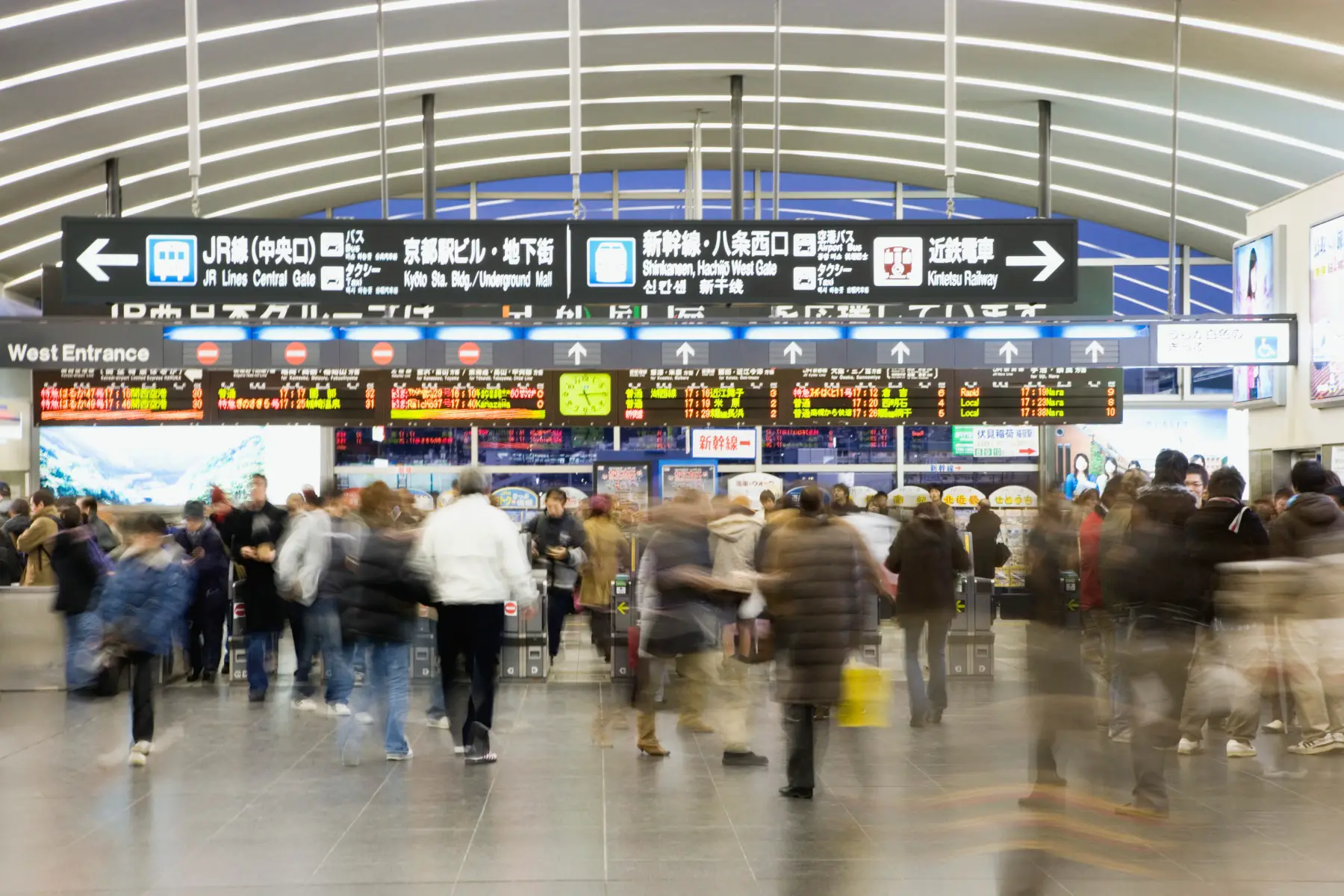
Japan ranked as the most popular destination in the world in 2021 and received almost 32 million inbound visitors in 2019, prior to the COVID-19 pandemic. Fortunately, the country has numerous airports (空港, kuko) serving the yearly influx of passengers.
Tokyo Narita
One of Tokyo’s two international airports, Narita (成田), is located approximately 64 kilometers from the center of the city. Although it handles major international airlines from destinations across the world, it is more popular for leisure routes. As such, airlines operating here include:
- Air Canada: Toronto and Vancouver
- Air China: Beijing, Shanghai, and Hangzhou
- Cathay Pacific: Hong Kong and Taipei
- Emirates: Dubai
- Etihad: Abu Dhabi
- Jetstar Japan: Domestic routes
- KLM: Amsterdam
- Malaysia Airlines: Kuala Lumpur and Kota Kinabalu
- Qatar Airways: Doha
- Singapore Airlines: Singapore and Los Angeles
- Thai Airways: Bangkok
- United Airlines: Denver, Honolulu, Houston, Los Angeles, Newark, and San Francisco
Narita is also a base for Japan’s two main carriers – Japan Airlines and All Nippon Airways – and as such, they operate numerous domestic and international routes from the airport.
There are numerous ways to get to Narita via public transportation in Japan. For example, trains from the JR Line and Keisei Line operate between Tokyo and the airport’s terminals. There are also numerous bus routes to different parts of Tokyo and other destinations further afield. Of course, taxis are also an option.
Tokyo Haneda
Haneda (羽田) was originally Tokyo’s primary international airport but began operating domestic flights only after 1978. However, opening a new international terminal in 2010 meant it could begin operating international services again, in addition to domestic routes.
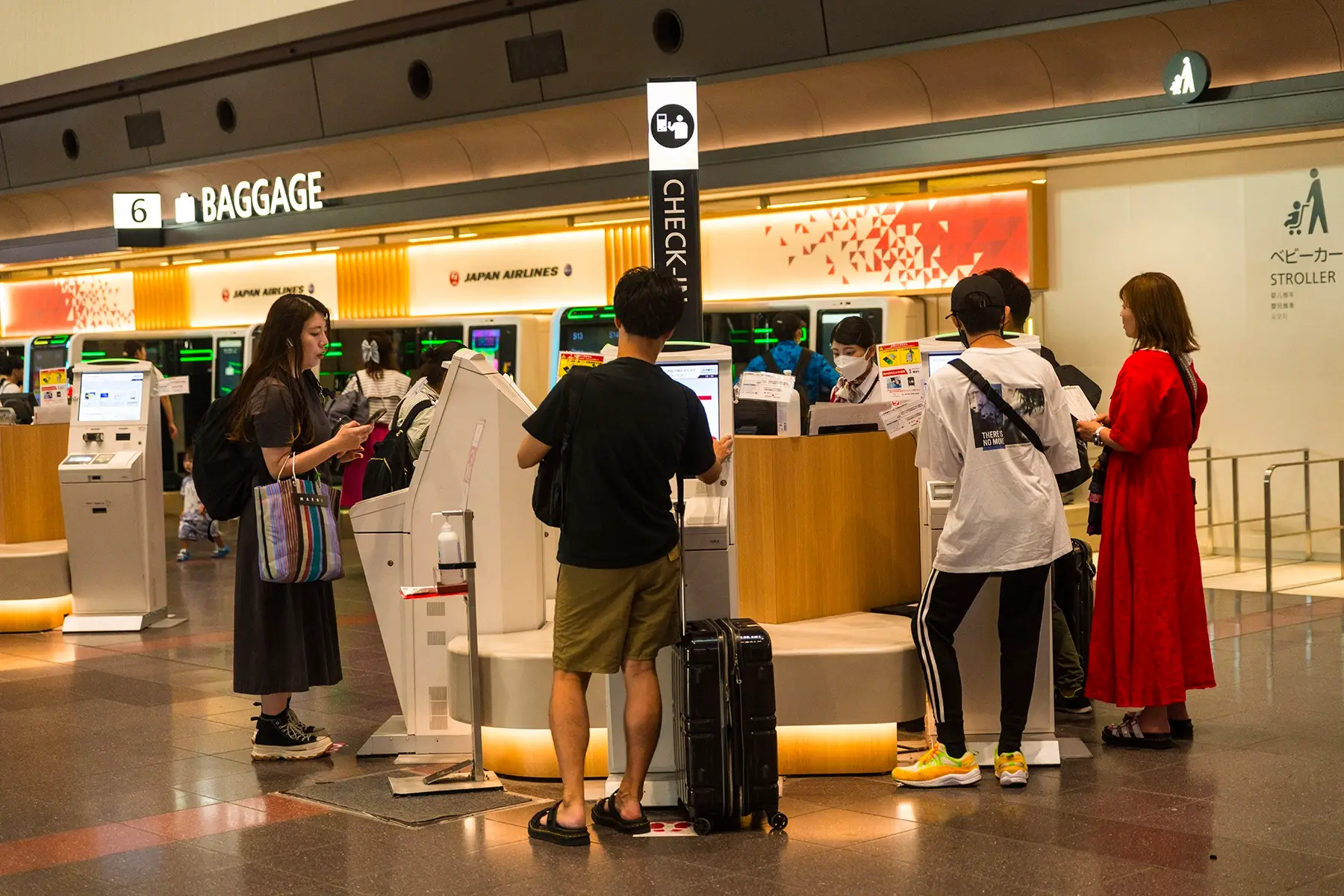
These days, numerous airlines serve this airport, including:
- Aeroflot
- ANA Wings
- British Airways
- Delta Airlines
- Emirates
- ITA Airways
- Japan Airlines
- Lufthansa
- Qantas
- Scandinavian Airlines
Traveling from Haneda Airport to central Tokyo on public transport is very easy. The airport connects directly to Tokyo Monorail’s Hamamatsucho station and the Keiyku Line’s Shinagawa station within 13 minutes. There are also numerous bus routes to different destinations, which take one to two hours, as well as taxis.
Kansai International
Kansai (関西) is the main airport for the region, and because of this, it gives passengers easy access to popular Japanese destinations such as Osaka (大阪), Kyoto (京都), and Kobe (神戸). All Nippon Airways and Japan Airlines operate several domestic and international routes from the airport. However, numerous international carriers also serve this airport, including:
- Air China
- Air France
- Cathay Pacific
- Emirates
- Eva Air
- Finnair
- KLM
- Lufthansa
- Qatar
- Singapore Airlines
- Thai Airways
- United Airlines
Kansai is located just 50 kilometers from central Osaka, and there are numerous public transport options to get to the city. For example, there are several trains on the Nankai and JR Lines, numerous buses to destinations across the region, and even a high-speed ferry to Kobe airport.
Chubu Centrair International
Located some 35 kilometers south of Nagoya (名古屋), Chubu (中部) is the main international airport for Japan’s central region. Although some major carriers serve the airport, most airlines operating from it are small or budget carriers.

These include:
- Air Busan
- Cathay Pacific
- HK Express
- Jeju Air
- Peach
- Singapore Airlines
- Tigerair
To travel between Nagoya and the airport, you can take numerous trains, buses across the city, taxis, and even a high-speed boat service to Tsu, a city located in Japan’s Mie Prefecture.
Fukuoka
Fukuoka (福岡) is the main airport on Japan’s Kyushu island. It is also one of the busiest in the country and serves numerous international and domestic flights. Airlines include All Nippon Airways, Asiana, Cathay Pacific, Eva Air, Japan Airlines, Peach, Singapore Airlines, Thai Airways, and United.
Passengers can travel by train, subway, bus, or taxi to get to the city of Fukuoka or other destinations on Kyushu island.
Sapporo New Chitose
Chitose (千歳) is the biggest airport on the island of Hokkaido (北海道) and serves Sapporo (札幌) and numerous regions in the area. Several small carriers operate domestic flights to destinations such as Fukuoka, Kobe, Tokyo, Nagoya, Osaka, and Hiroshima (広島).
However, there are also some that offer international routes from Chitose, such as Cathay Pacific (Hong Kong), Eva Air (Taipei), Jeju Air (Seoul), and Thai Airways (Bangkok). Connections to Chitose are easy via the local JR Line trains, buses, or taxis.
Naha
Naha (那覇) is a passenger airport and the gateway to Japan’s Okinawa (沖縄) region. However, it also has military ties. It is a busy but small airport, with only a handful of airlines operating from it.
That said, there are international routes with Cathay Pacific, Asiana, Jeju Air, Korean Air, Peach, and China Airlines. Although the Okinawa Urban Monorail is the easiest way to get to Naha city, bus lines also serve the city and destinations further away.
Other methods of public transportation in Japan
Although they are not as popular as trains, buses, and flights, domestic ferries are another component of the public transport network in Japan. These usually serve domestic destinations that are trickier to reach. Some routes include:
- Kagoshima to Naha
- Kobe/Osaka to Kagoshima
- Nagoya to Sendai
- Tokyo to Tokushima
Public transport discounts and financial aid in Japan
Most public transportation networks in Japan offer fare subsidies for certain categories of passengers. Below are the groups of commuters who usually enjoy discounts:
- Children (子供, kodomo)
- Seniors (シニア, shinia)
- Students (学生, gakusei)
Notably, purchasing round-trip tickets rather than single-journey fares is often cheaper.
How disability-accessible is public transportation in Japan?
Public transport is becoming increasingly accessible to passengers with mobility issues in Japan. For example, many train stations – especially the big ones – have lifts, chair lifts, and even wheelchair-friendly escalators. Moreover, wheelchair users (車椅子利用者, kuruma-isu riyosha) can make special reservations for the Shinkansen bullet trains.
Similarly, most city buses are accessible, although this can be a bit more fiddly as drivers have to manually set up a ramp at the doorway for a wheelchair user to board or disembark. In addition, it is now possible to find accessible JapanTaxis, which are modeled on London’s famous black cabs and can accommodate wheelchairs.
How environmentally friendly is public transportation in Japan?
While Japan still has a long way to go when it comes to providing sustainable public transport options, there have been some moves in this direction.
For example, Tokyu Railways powers its trains with renewable energy sources such as solar and geothermal. In addition, the JR Tokai line will begin operating Shinkansen bullet train services that run on electric maglev technology in 2027.
Public transportation safety tips in Japan
Public transportation in Japan is among the safest in the world; therefore, you should be able to travel with peace of mind.
However, as always, you should still employ common sense, such as keeping your belongings close to you and watching out for pickpockets.
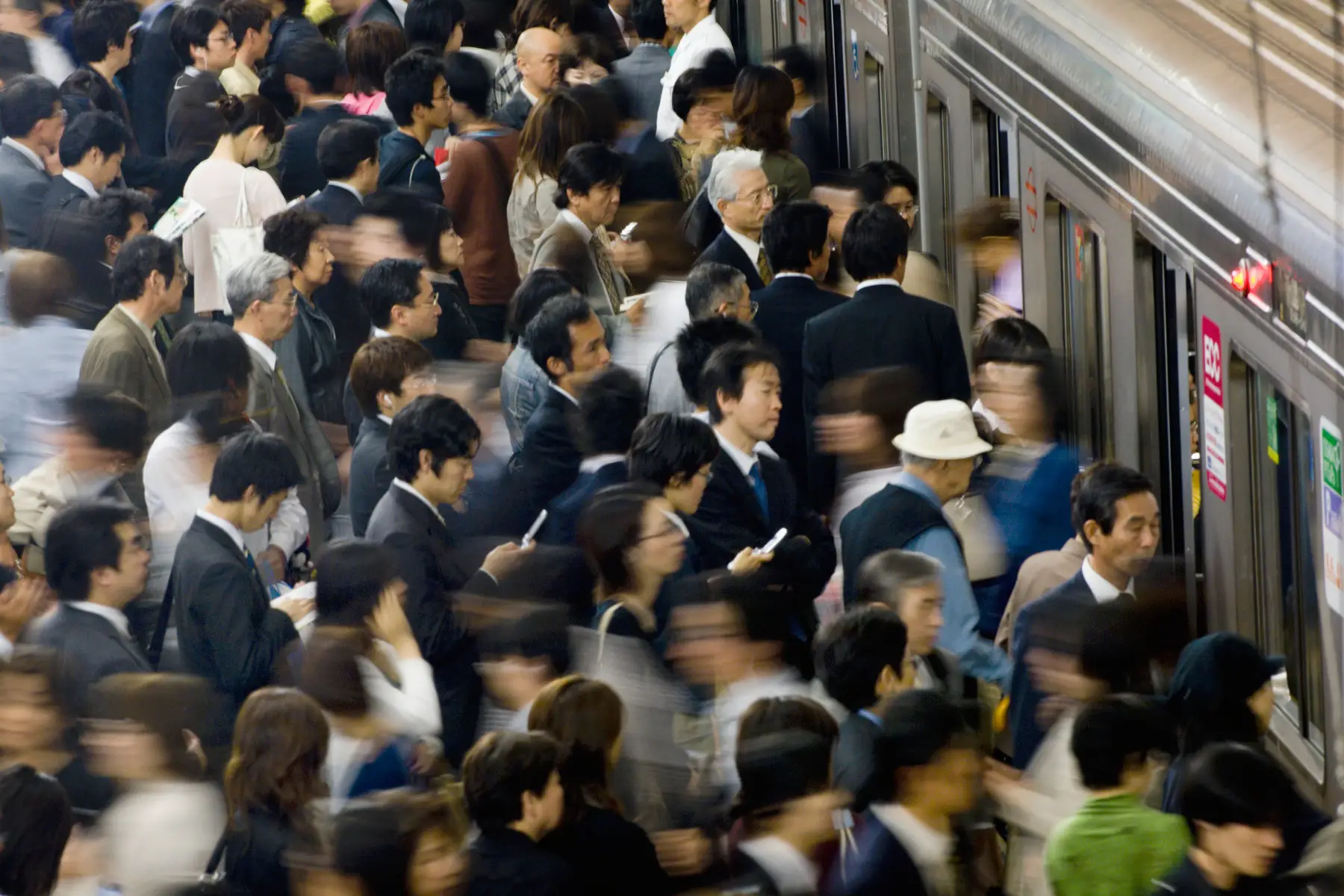
Another thing to consider is that rush hour in major cities can be incredibly chaotic. As such, you may need to physically brace yourself for being packed into trains like sardines and having to fight your way out when you arrive at your destination.
Making a public transportation complaint in Japan
Because there is no central organization for public transportation in Japan, filing a complaint can be tricky. Usually, your best bet is to start by getting in touch with the company which runs the transport service and expressing your concerns.
Useful resources
- Japan Guide – provides in-depth information about the different modes of public transport in Japan
- Japan Rail Pass – authorized distributor of the Japan Rail Pass
